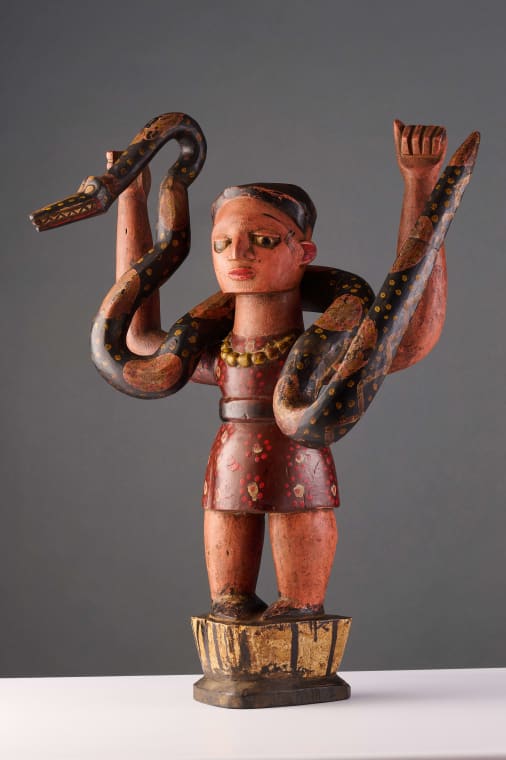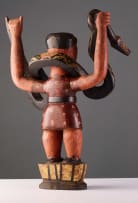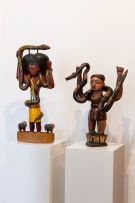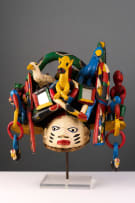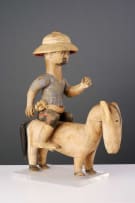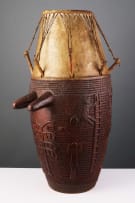The Starcke Collection of African Art
Timed Online Auction, 3 - 19 November 2025
African Art and Artefacts
Incl. Buyer's Premium & VAT
About this Item
Provenance
African Image, Cape Town
Notes
The iconic image of Mami Wata, the African water spirit, derives from a Hamburg chromolithograph (c.1885) of a European female snake charmer. Reproduced in India and England, it circulated widely through West and Central Africa, where it was reinterpreted as an image of a powerful foreign water deity. The snake, an African water symbol, signifies both protection and control, while its position over Mami Wata’s head recalls the rainbow, another water emblem.
The mirror became central to Mami Wata worship. Devotees use it to reflect and internalize her image, defining identity and asserting spiritual control. The snake-charmer image also spurred a growing African interest in Indian Hindu prints, whose deities were equated with Mami Wata’s power and prosperity. Africans studied and re-contextualized these Indian icons and rituals, developing an elaborate syncretic faith grounded in visual and performative practice.
Emerging in the early 20th century in southeastern Nigeria, the Mami Wata cult spread widely through Nigeria and West Africa, combining foreign imagery and local cosmology. The threshold between the worlds of land and water, life and spirit. It is across this boundary that possession, healing, or dream-voyages to her realm occur. She is both benevolent and fearsome, bringing wealth, fertility, and success, or sickness and infertility. Her snake associations echo the pan-Southern Nigerian belief in serpents as messengers of water deities. Beyond the Yuruba, she is venerated among the Igbo, Ibibio, Fon, Ewe, and Fante, and appears decoratively among Baule, Guro, and Yaoure peoples further west.
Michael Heuermann
Condensed Summary: Mami Wata – Mermaids, Mirrors, and Snake Charmers (Igbo Shrines)
Based on Henry John Drewal, 'Practice and Agency in Mammy Wata Worship in Southern Nigeria,' African Arts, Vol. 21, No. 2.
